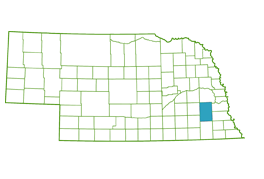|
|
Listings: 1 to 21 of 21
|
At this cite exploring the Mayflower voyage to the New World, you can find biographical sketches of the Pilgrims who set sail for a new world 397 years ago.
The biographies are drawn from Robert Charles Anderson’s Pilgrim Migration and provide details including information on births, marriage, children, and their roles in Plymouth Colony. More in-depth features and scholarly material will be added to the site to commemorate the historic Mayflower voyage in future months.
|
|
Chronicling America is a Website providing access to information about historic newspapers and select digitized newspaper pages, and is produced by the National Digital Newspaper Program (NDNP). NDNP, a partnership between the National Endowment for the Humanities (NEH) and the Library of Congress (LC), is a long-term effort to develop an Internet-based, searchable database of U.S. newspapers with descriptive information and select digitization of historic pages. Supported by NEH, this rich digital resource will be developed and permanently maintained at the Library of Congress. An NEH award program will fund the contribution of content from, eventually, all U.S. states and territories.
|
|
Since the first census in 1790, the U.S. Census Bureau has collected data using a census "schedule," also called a "questionnaire” or “form." Between 1790 and 1820, U.S. Marshals conducting the census were responsible for supplying paper and writing-in headings related to the questions asked (i.e., name, age, sex, race, etc.).
The PDF of the report may also be directly accessed at
https://www.census.gov/prod/2002pubs/pol02marv-pt2.pdf
|
|
Presentation from August 17, 2020.
|
|
A project of the William M. Scholl Center for American History and Culture at The Newberry Library in Chicago, the Atlas of Historical County Boundaries is a powerful historical research and reference tool in electronic form. The Atlas presents in maps and text complete data about the creation and all subsequent changes (dated to the day) in the size, shape, and location of every county in the fifty United States and the District of Columbia. It also includes non-county areas, unsuccessful authorizations for new counties, changes in county names and organization, and the temporary attachments of non-county areas and unorganized counties to fully functioning counties. The principal sources for these data are the most authoritative available: the session laws of the colonies, territories, and states that created and changed the counties.
Maps can be downloaded as PDF's or GIS files. Take time to explore the "download maps" and "using the atlas" links. It is well worth the effort.
|
|
A website by Gary Felix which provides information about doing Mexican-American genealogies.
|
|
By the Genealogical Society of Bergen County, N.J. in 2011.
|
|
The Kansas Historical Society is the state agency charged with actively safeguarding and sharing the state’s history to facilitate government accountability, economic development, and the education of Kansans. This is accomplished by collecting, preserving, and interpreting materials and information pertaining to state government and Kansas history.
|
|
Provides a portal of links for Mexican-American genealogy and history.
|
|
About the Midwest Genealogy Center
The Midwest Genealogy Center (MGC) is one of the nation's preeminent resources for family history, providing access to almost three-quarter of a million on-site materials. The Genealogy Center features 52,000 square feet of space to house all the resources and technology genealogists need to research.
|
|
Contains information about people of Czech ancestry in the U.S.
|
|
Interested in maps? Want to know more about the US through maps including historical topographical maps? Visit the US Geological Survey site.
|
|
Search engine developed by Stephen Morse.
|
|
The State Archives of Iowa contains records of enduring value created or collected by Iowa state agencies. These materials document all facets of the state's history. Records of vital statistics are excellent sources of genealogical information. Prior to July 1880, only marriages were recorded in public records, and then only at the county level. In 1880, legislation was enacted creating the Department of Public Health and requiring births, deaths and marriages to be recorded at both the county and state levels. Current state law requires that all records of vital statistics must be 75 years old to be made available to the public by the State Historical Society of Iowa (SHSI). State law also requires that all records of illegitimate births and stillborns be closed to public inspection.
|
|
1-86-NARA-NARA or 1-866-272-6272
|
|
A FamilySearch webinar by Beth Taylor, CG.
|
|
|


